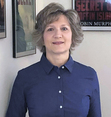Writing a Query
One of the dreaded but necessary evils for a writer is the query. This seems to be a huge topic for so many, and for good reason. This topic is probably one of the most discussed and questioned amongst writers, including myself. I learned some great tips and ways to query editors of magazines, as well as publishers for novels. I have a few tips, but I’m also going to include examples, which has always been the best way for me to learn how to do it for myself.
First, and foremost, you must be sure to research the best possible editor or publisher for your submission. If you are submitting a non-fiction article please be sure you have read the magazine to understand what and how they publish their stories. You certainly wouldn’t submit a travel article on France’s gardens to a magazine that publishes stories on mechanics. Search for magazines specific to your topic and then read their submission guidelines. Some magazines will even send you one free copy if you are planning to submit to them. They do this for the specific reason that you understand what their magazine is about. If you don’t take the time to research, then you will have wasted your time and energy, as well as theirs.
The same goes for submitting your novel to a Publisher. It’s truly worth the effort to search for publishers and/or agents who are interested in the genre of your story. It takes a great deal of time, but it’s worth it in the end.
Another huge mistake writers make is not following the submission guidelines. These are out there for a reason, so do take your time and carefully read what they’ve outlined. They’ve written them for a reason. If you don’t follow them, they will more than likely toss that query you spent weeks on perfecting in the proverbial garbage.
Most agents/editors prefer a one page query, as opposed to receiving a full manuscript or article. They expect to find pertinent information written in a concise and well organized manner. Below is a breakdown of what is needed in a query letter.
Paragraph One – should contain the hook, much like the hook you used in your opening first chapter of your novel or the first paragraph of your article. You want to grab their attention in the same manner you try to grab the reader. I have learned that if you do not grab them within the first ten seconds, your query will land on the slush pile. It can be as critical as the first line. Here was the one line I used describing my second paranormal mystery book.
“My paranormal mystery book, Secret of the Big Easy, is a Ghost Hunters (TAPS) meets Psychic Detectives consisting of 57,800 words. Dr. Marie Bartek struggles to gain control over the new psychic abilities she encounters while attending a veterinarian conference in the French Quarter of New Orleans. These recent visions prompt her to work with local police and members of the Sullivan’s Island Paranormal Society team to help solve the succession of heinous satanic murders, while fighting against a demon from taking over her mind. Secret of the Big Easy is the second book in my series with Dr. Marie Bartek and the SIPS team. This story will captivate the reader with murder, suspense, and the world of the paranormal.”
This first line gives them a visual of a ghost investigating team working with a psychic helping to solve a murder or mystery. It also includes the word count and a very brief description about the focus of my protagonist. I also added the fact of it being the second book in my series, which is important information, and then included how my book would intrigue a reader.
Paragraph Two – can also include the length of the article and/or novel, along with your objectives. Why is this article or novel suited for this magazine or publisher? You can also include a statement of a certain timing of your article or book. Such as something taking place during a historical event or technological breakthrough.
Paragraph Three – give your credentials if you have previous publications, fiction or non-fiction. Include if you have a special background for writing the article/story, such as a health professional; include hobbies you are passionate about. If this is your first publication and you have no real expertise, you can omit this paragraph. Don’t add anything that isn’t germane to your article or story. Stick with your experience, and if you decide to omit this paragraph make sure your first paragraph really hooks them. Here is what I had for paragraph three for my first book:
“Sullivan’s Secret was assisted-published in June of 2011 and received great reviews. I am a 2011 winner of the 50 Great Writers You Should Be Reading, and a member of Sister’s in Crime. I will self-promote this story on my Facebook, Twitter, LinkedIn, Goodreads author pages, as well as my website. I am a paranormal/ghost investigating junkie and this interest is what gave birth to Marie and the SIPS team.”
Paragraph Four – close the deal. Let them know your article or novel is complete and NEVER forget to thank them for their time. Here’s an example of my last paragraph:
“Thank you for taking the time out of your busy schedule to read my query. I hope Secret of the Big Easy can find a place with you at ________. The novel is complete, and I can send it to you at your earliest convenience.”



